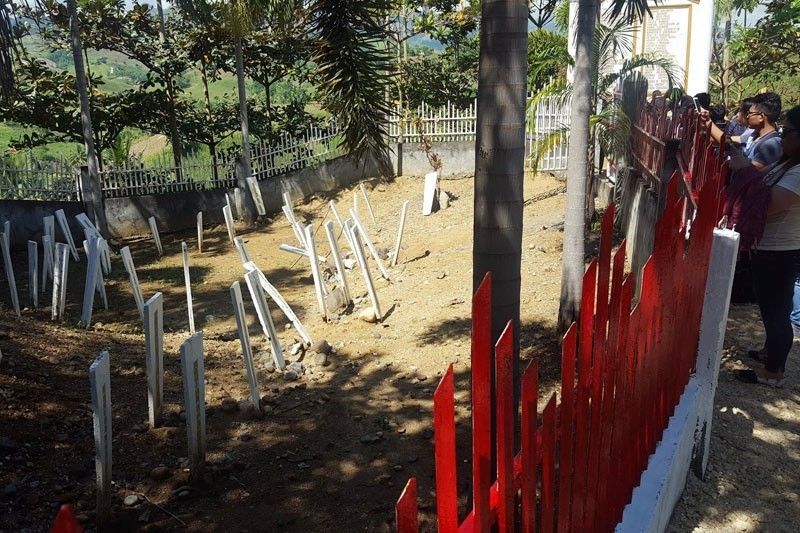11 years later, Maguindanao massacre far from resolved

MANILA, Philippines — Even with the landmark convictions of primary suspects last year, the quest for justice over the 2009 Maguindanao massacre continues as appeals remain pending and dozens of suspects remain at large.
Eleven years after the Nov. 23, 2009 massacre, the trial is ongoing for at least four suspects arrested after the landmark decision on Dec. 19, 2019.
Suspects Kagi Faizal, Gambayan Kasim, Ysmael Baraquir and Sauri Esmael Pagabangan were among 80 suspects at large at the time of the verdict, which convicted 43 suspects and acquitted 56 others.
They pleaded not guilty during their respective arraignments earlier this year.
Based on court records, at least 15 of the suspects who remain at large are surnamed Ampatuan, the political family accused of perpetrating the massacre, which claimed the lives of 58 people including 32 media practitioners.
Five members of the Ampatuan clan were convicted of 57 counts of murder, including former Datu Unsay mayor Andal Jr. and his brothers former Autonomous Region in Muslim Mindanao governor Zaldy and former Shariff Aguak mayor Anwar Sr.
Their father, clan patriarch and former Maguindanao governor Andal Sr., died in 2015 while in detention.
Also convicted were Anwar Sr.’s sons Anwar Jr. and Anwar Sajid, as well as 23 other police officers and alleged members of the clan’s private army who took part in the massacre.
Fifteen others were convicted of a lesser crime of being accessory to the murder.
Meanwhile, two Ampatuans – former Maguindanao officer-in-charge Sajid Islam Ampatuan and his brother-in-law Akmad – were acquitted over the failure of the prosecutors to prove their involvement in the massacre.
Most of those who were convicted appealed the decision before the Court of Appeals, which remains pending almost a year after the decision rendered by Quezon City Regional Trial Court Branch 221 Judge Jocelyn Solis-Reyes.
This, along with the dozens of suspects remaining at large, was cited by various groups in a September letter asking the United Nations Educational, Scientific and Cultural Organization (UNESCO) to identify the case as unresolved.
Earlier that month, Undersecretary Joel Egco – executive director of Presidential Task Force on Media Security –touted the decision of the UN body to classify the case as “resolved” in its Observatory of Killed Journalists and Director General’s Report on the Safety of Journalists.
Eighteen groups and over 100 individuals wrote a letter of appeal on the designation of the case, noting that one court decision – while a triumph of justice – does not mean that the case is resolved.
“Far from it,” they told UNESCO director general Audrey Azoulay, citing the appeals and the remaining suspects who have yet to be arrested.
“This is the reason why the families of the 32 journalists who perished, as well as the witnesses who testified for the prosecution, continue to fear for their safety,” read the letter.
“As many are not enrolled in the Department of Justice’s witness protection program, and continue to live in their known communities, they remain exposed to possible retaliation and attacks,” it added.
The letter also raised the dismissal of the murder case filed in connection with the death of photojournalist Reynaldo Momay whose remains were never found.
The signatories also cited the pending case before the Department of Justice against 49 people not included in the initial 197 suspects charged for the massacre.
In response, UNESCO Deputy Director General Xing Qu said they have maintained that the case will remain classified as “ongoing/unresolved” after they learned that appeals have been launched.
Qu said the classification will remain “until such moment when a final verdict is reached by the Philippine judicial system.”
Impunity index
Last October, the Committee to Protect Journalists released its latest Global Impunity Index that highlights countries “where journalists are slain and their killers go free.”
Due to developments in the Maguindanao massacre case, the Philippines improved its ranking from fifth to seventh this year.
The change, according to CPJ editorial director Elana Beiser, was because the Maguindanao massacre that happened in 2009 no longer falls within the 10-year timeframe for calculating the index.
“Landmark convictions late last year led CPJ to adjust the status of the Ampatuan cases to ‘partial impunity’ from ‘full impunity’ previously – meaning that they would no longer have figured into the index calculation regardless of the timeframe,” added Beiser.
She noted that those who were convicted in the case, including primary defendant Andal Ampatuan Jr. and his brother Zaldy, have appealed the ruling that found them guilty of 57 counts of murder.
“In the Philippines’ labyrinthine and politicized legal system, their legal challenges could take several years to be tried and the possibility of their acquittal on appeal still looms large,” said Beiser.
“Scores of suspects remain free, including Ampatuan clan members, leaving those who have pursued justice for the slain journalists exposed to possible reprisals,” she added.
Fifty-eight people including 32 media practitioners died in what was dubbed as the single worst case of journalist killings in the world.
The victims were en route to the provincial capitol in Shariff Aguak when they were stopped and brutally murdered by more than one hundred men.
They were led by Genalyn Mangudadatu, wife of then Buluan vice mayor and now Maguindanao Rep. Esmael Mangudadatu, who was at the time planning to run for governor and challenge the Ampatuan clan.
Also dead were Mangudadatu’s sisters, lawyers, aides and private citizens who were mistook as part of the convoy.
Among those killed were media practitioners supposedly assigned to cover the filing of Mangudadatu’s certificate of candidacy.
- Latest
- Trending






























